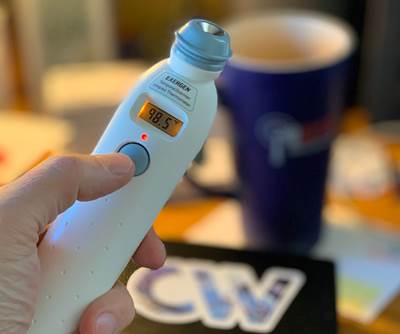Seeking inspiration in a virtual environment
In an increasingly digital world, how far can the virtual environment take us? Only so far, Dale Brosius says. At some point, we have to get real.

Source | Getty Images
We live in an increasingly virtual world. This was true well before February 2020, and the changes the coronavirus pandemic has brought only accelerated the trend. Raise your hand if you used the Zoom application in 2019. I sure didn’t. We’ve had plenty of virtual meeting platforms for quite a while — I recall using Skype as early as 2005 or 2006 to connect with Australia and Europe, and to connect back to the U.S. from those same places. Successive platforms grew mainly as a way for companies to conduct internal meetings with far-flung colleagues, reducing the need for travel with the ability to share content, then video, with others. This evolved into applications for webinars and training, growing year by year. 2020 has been the year where entire conferences, including composites-focused events, have been put online, with new features being added for trade show content and networking options. No doubt these platforms are here to stay and will become part of the mix, especially for short, focused technical conferences, when in-person events return.
This trend, however, does beg the question: How far can the virtual environment take us? Let’s take aviation, for example. We can create a virtual composite airplane and simulate the manufacturing of the components, including resin flow, lamination, spring back, etc. We can simulate the factory floor and assembly process, as well as virtually test the components and airplane for stiffness and fatigue. And I know I’m very grateful that pilots train extensively in a flight simulator before hopping in a real cockpit! At some point, however, no matter how capable our digital tools are, the virtual world must be traded for the physical world with the certification and production of actual airplanes. None of us, I wager, would pay for a virtual seat on a virtual airplane to a virtual destination.
This trend, however, does beg the question: How far can the virtual environment take us?
As important as the virtual world has become, growing the economy requires making real things that people and companies will buy. Developing confidence in these virtual tools requires validation that only comes from making and testing the coupons, components and assemblies that the virtual tools represent. And the sooner we all get back to doing that, the better. The same goes for returning to in-person events, I believe.
Over the years, people that read this column have asked me, “where do you get your ideas for what to write?” Historically, I get many topics from what I see, hear, touch and experience at in-person events — trade shows and conferences — walking the show floor, visiting exhibitors and engaging in side conversations with attendees, colleagues and friends.
Looking back at events I attended in 2019, I wrote columns inspired by the January Detroit auto show, JEC World in March, a small infrastructure event in April, SPE ANTEC and SAMPE in May, the SPE Automotive Composites Conference and Exhibition (ACCE) in early September, CAMX in late September and the CW Carbon Fiber conference in November. That’s seven of 12 columns right there. Throw in some significant events like the cancellation of the A380, the merger of Raytheon and United Technologies, the 50th anniversary of Apollo 11 and some insights from a collaboration mission trip to Germany, and we’re up to 11. It’s pretty easy to come up with one more idea with all that fodder.
So how hard is it for this writer to depend solely on “virtual inspiration” when traditional avenues are closed off? Pretty hard, I’ll admit. Luckily, there’s still some really great things going on in the industries we serve. My column from June 2016 focused on how manufacturing is in my blood, and how inspired I get visiting factories. Following the CAMX event last September, I was granted a tour of the SpaceX manufacturing site in Hawthorne, California, U.S. before catching my red-eye flight home. This facility produces the engines and the advanced composite components used for the various SpaceX launch platforms. Like many, I was enthralled with the May 30 launch of the SpaceX Crew Dragon atop a Falcon 9 rocket, the first delivery of astronauts to the International Space Station from U.S. soil since the Space Shuttle was retired in 2011. Composite materials played a major role in the success of the mission, and no doubt a lot of virtual models and simulation did too. At the end of the day, though, it was the real, physical hardware that had to perform.
Related Content
Combining multifunctional thermoplastic composites, additive manufacturing for next-gen airframe structures
The DOMMINIO project combines AFP with 3D printed gyroid cores, embedded SHM sensors and smart materials for induction-driven disassembly of parts at end of life.
Read MorePlant tour: Airbus, Illescas, Spain
Airbus’ Illescas facility, featuring highly automated composites processes for the A350 lower wing cover and one-piece Section 19 fuselage barrels, works toward production ramp-ups and next-generation aircraft.
Read MorePlant tour: Collins Aerospace, Riverside, Calif., U.S. and Almere, Netherlands
Composite Tier 1’s long history, acquisition of stamped parts pioneer Dutch Thermoplastic Components, advances roadmap for growth in thermoplastic composite parts.
Read MorePlant tour: Aernnova Composites, Toledo and Illescas, Spain
RTM and ATL/AFP high-rate production sites feature this composites and engineering leader’s continued push for excellence and innovation for future airframes.
Read MoreRead Next
Coronavirus/COVID-19: Seeking feedback
As you assess your current and coming work in the composites world, what kind of industry information is going to have the greatest utility?
Read MoreScaling up, optimizing the flax fiber composite camper
Greenlander’s Sherpa RV cab, which is largely constructed from flax fiber/bio-epoxy sandwich panels, nears commercial production readiness and next-generation scale-up.
Read MoreCutting 100 pounds, certification time for the X-59 nose cone
Swift Engineering used HyperX software to remove 100 pounds from 38-foot graphite/epoxy cored nose cone for X-59 supersonic aircraft.
Read More











